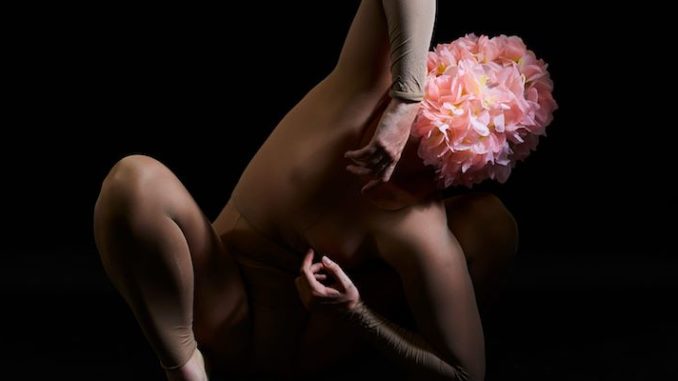
Community Makeovers
LOUD AND PROUD
2020 marks my first Pride and Fringe in Tāmaki Makaurau not as a resident but as a mere visitor. Both events also took on new directors and new directions as they entered the new decade. While I still find myself deeply invested in the arts ecology of the city, and undoubtedly see my future here, it is rare for a critic/practitioner to sit back and enjoy a city on its own terms, rather than constantly considering how they fit into it.
My trip started off with a bang on the eve of Auckland Pride. COVEN, an art collective from South Auckland specialising in Vogue culture and performance art, put together The Supreme Ball right in the Winter Gardens. It was an EVENT, to put it lightly. My first ever vogue ball – and what a way to have that cherry popped! As some of Auckland’s best dressed vogue performers (the theme was Deities & Demons) strutted their stuff, I thought this is the sort of space activation that most theatre-makers wish they could pull off.
To open Pride more officially was the equally extravagant OurGala at Q Rangiatira, directed by one of Auckland’s very own theatre favourites Freya Finch, in a diverse and inclusive line-up I’m proud to say I was a part of. It’s essentially a taste test of some of what is on offer at Pride, but is elevated to being a spectacular standalone event in its own right. A smorgasbord of talent across the rainbow flag.
THE NEXT GENERATION
It’s worth mentioning that this is the first year since the annual Legacy Project decided to go on hiatus. It was one of my first platforms for developing a voice as a playwright, and for many others too. While it’s absence means less gateways for new queer voices, we’re lucky to have a healthy new wave of practitioners making work.
The Basement Theatre played host to two works by emerging theatre-makers during Pride. Upstairs in The Studio was Take the Crown (brainchild of Todd Waters), a devised show that mined its young, diverse ensemble for authenticity while also channeling queer history. Think FLAPS but for baby gays.
Downstairs in the Main Space was Sarita Das’ Perfect Shade, a wig-fueled exploration of colorism and colonialism through a Bengali lens. A reminder that a show doesn’t need to explicitly tackle queer subjects to be queer. Veering closer to performance art than theatre, Das refused the ambiguity of subtext and simply said what she wanted to say.
Over at Q, Liam Coleman’s relationship drama Play demonstrated the ups and many downs of being in a gay love triangle. Though its sexual politics seemed uneven and one-sided, it was gifted by sharp dialogue and some deeply felt performances, particularly from Coleman himself. And, despite lacking nuance, it reminded me how a first play can feel like a raw and exposed nerve.
In what might be my first overtly queer clown show, I caught Ania Upstill in Transhumance. A gentle yet virtuosic display of craft, exploring notions of gender performativity, and reminding the audience that clothing, in particular, is constructed and given purpose, rather than having any intrinsic meaning. There’s something about the clown’s perspective of the world that is ideal for unlearning our taught gender constructs.
Joshua Iosefo’s Odd Daphne (return season) at Māngere Arts Centre might be my favourite playwriting debut in a long time. Though not officially part of the Pride programme it undeniably embodied its values. I was deeply annoyed at having missed it last year, so not only was I glad to finally catch it, but found it deeply deserving of its Hackman theatre win. It reshaped some of my fundamental prejudices and ideas of what it means to make “community” theatre. The concept of Iosefo’s very own parents taking part in the telling of his story still astounds me. Profoundly moving.
PAYING RESPECT
Aroha Awaru wrote what might be the most muscular and tight of his works so far, going for a less is more approach. His purgatory drama Provocation paid homage to those in the queer community who came before us. A cautionary tale with splashes of true crime. At barely an hour, I thought it could have afforded to delve deeper into the psychology of its characters though.
Samesame But Different (Pride’s literary festival) celebrated the late founder Peter Wells, with comic artist Sam Orchard stepping in as programming director. Also, notably representing theatre was playwright Victor Rodger as their honorary writer. At the event, he discussed the plays that made and shaped him. Of particular interest was his experience watching David Williamson’s Heretic and the story behind his own debut Sons.
This Pride struck me as one of the proudest and most vibrant I’ve ever seen it, and perhaps the proudest I’ve felt around it personally. Kudos to newly appointed director Max Tweedie for his efforts. Inclusivity and diversity are often bandied about as an act of tokenisation but it felt earned and deservedly won here. A refreshing change from the recent controversies that have plagued Auckland Pride over the last few years. While New Zealand still has a long way to go in terms of producing queer Kiwi theatre on its mainstages, this Pride shows promise in laying the foundations for our contemporary voices.
NEW FACE OF FRINGE
With last year’s announcement that Lydia Zanetti, artistic director of Auckland Fringe, was stepping down from the role, there were definite concerns with who would take over. After years of inactivity, it was Lydia who put plans in motion to resuscitate Fringe with little to no money. So, what would happen after she left? Who could step up to the plate?
Better late than never, Borni Te Rongopai Tukiwaho was announced as the replacement December last year. A man whom I very much respect, Borni is the leader of arts Taurima Vibes and the Atawhai festival. As a practitioner he is one of our most proficient and experienced makers whose community and mental health practise is especially paramount. He has also been a core part of the Te Pou Theatre and Hobson Street Theatre whanau. His appointment of Auckland Fringe, then, seems appropriate. He strikes me as the perfect person to not simply have Auckland Fringe be just another Fringe festival around the world, but question its values and relationship within this particular city. While this year felt like a festival finding its new feet, it was a promising makeover, with plenty of gems to be found in the programme.
GENDER TROUBLE
Unsurprisingly, and most necessarily, the white male gaze (and voice) came under scrutiny throughout different fringe shows. Sometimes this was a direct response or simply through females taking up space.
Theatre Scenes’ very own editor James Wenley constructed a postdramatic lecture on the very basis of making art as a white man. I found Dr. Drama Makes a Show to be a moving exploration of feeling displaced in our contemporary culture, particularly a culture where you know your voice is a voice in excess. The problem and very point of the show – the question of if it should have been made at all – becomes a gordian knot impossible to undo. A play that is bounded up in its very contradictions. Accessibly cerebral and begging to be challenged.
In the same space, an ensemble of talented female performers tackled and flipped the word of the great William Shakepseare in Shakespeare with Chicks. A joyous trifle of a play – that didn’t so much subvert the Bard’s texts as parody him with gusto. Perhaps the greatest pleasure of the show was seeing some of our finest local talent play roles that might not otherwise be given to them. Not to mention uncanny programming, with Michael Hurt’s tour de force Shakespearean solo No Holds Bard following days later.
With Lust Island, the seemingly annual all-female improv show fired shots at UK reality tv phenomenon Love Island. It was topical, irreverent and bawdy. And while it was an irresistibly good time, I felt it paled compared to last year’s Salem Bitch Trials. Gone was the absurdity of The Crucible as the backdrop, and I was reminded that sometimes “reality” is stranger than fiction.
Tampocalypse showcased a talented ensemble with a play of ambitious scope. Part post-apocalyptic fantasy and meeting room drama, the narrative never quite reconciled the two. But this postmodern narrative was never boring and often thoughtful. If it buckled under the weight of its form, it still displayed a breadth of ideas through a distinctly female lens.
Have You Ever Been with an Asian Womxn? justly won the “Unfuck the World’ award at the Fringe Awards. While it expectedly poked fun at sexual orientalism and fetishisation, the surprising turn came from Gemishka Chetty’s letter to her mother. It was a stirring reminder for those of us with cultural baggage that forces us to compartmentalise our creative and family lives. Though the craft was rough around the edges, it was an impressive showcase from an ensemble of non-actors willing to expose their personal stories to dig deeper into pressing issues.
In an unusual programming misstep, Proudly Asian Theatre (alongside SICKO Productions) co-produced the Pākehā male-driven Deep. Despite beautiful puppets, the exploration of marine archaeology and female sexuality wasn’t always clear. As reviewer Rand T. Hazou commented, “Perhaps this is territory that a female playwright would be better placed to shed light on and navigate?”
TIME’S UP
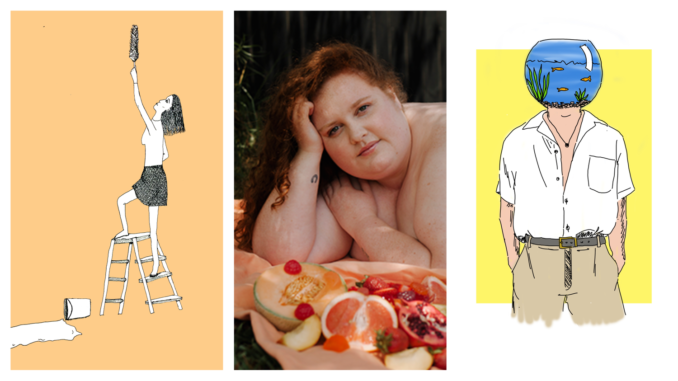 I wrote about The Basement’s season of durational theatre extensively here. All five shows were collectively awarded “Spirit of Fringe” which feels like an appropriate piece of recognition for a bold programming move. But, now that it’s over, what was it actually like?
I wrote about The Basement’s season of durational theatre extensively here. All five shows were collectively awarded “Spirit of Fringe” which feels like an appropriate piece of recognition for a bold programming move. But, now that it’s over, what was it actually like?
With Just One More, Arlo Gibson played out my nightmare of having to cold call strangers to talk about success over four hours. My heart broke a little when people refused to chat, saying they were, to paraphrase, too old for that. Still, he kept it joyful and contemplative. Oh, and the dancing!
By making An Open Apology, I bore witness to my collaborators and performers and the ways they navigated apologies with varying levels of success. Sometimes succeeding, sometimes failing, but always human. What an honour.
In Jelly Baby, a wordless Alice Kirker invited us to revel in the destruction of live objects and their body shaming baggage. It was Marina Ambokavich by way of the Looney Tunes, fully earning its “Best Live Art” award. A show I felt I was not the target audience for, yet was drawn irresistibly into.
Actors Georgie Salmon and Jacob Masters were posed with a dense wall of provocations, each one inspiring a new improvised infomercial. Which they were then forced to complete, one by one, over and over, morphing the meaning of household items. Every time they greeted each other (as if for the first time) became a slowly escalating running joke.
Lastly, Olivia Mahood probably stayed most literal and true to her title with Cleaning the Room. But even though she offered little subversion in content, there was a single-minded determination that might have been the most impressive to watch. Like a female myth of sisyphus there felt like an endless amount of cleaning to be done. Perhaps an unintentional indictment of The Basement Studio as much as a philosophical enquiry.
Fascinating overlaps with content and form abounded. Objects destroyed and reassigned meaning. Language repeated and fatigued. Varying levels of improvisation and performers lunging into the unknown. A definite sense that the audience was there and impossible to ignore. And, of course, the ultimate relief of reaching the end. There was no hero’s journey or climax per se. Each show simply ended when it needed to. Not the Aristotelian poetics of drama, but simply the sands of time itself.
CHAOS REIGNS
One of my favourite alternative venues, The Old Folks Association, was turned into a lo-fi playground of theatrical conventions. Stupid Bitch Wants a Puppy had maker Claire Waldron jumping from character to character as she explored her role as an “aging actress” with gleeful resistance. It’s a show that invites lazy criticism to be cleaned up and tightened, but that would also defeat the entire point. It’s unwieldy nature undeniably part of its charm.
With Nothing, director Jordan Dickson and his gaggle of TAP grads took a sharply written monologue play with unconventional delivery to a different venue every performance. The obstructions and impositions of the production created a risky theatre-making energy that is sorely missing in most new playwriting. If the actors didn’t always succeed in bringing out the improvisational spirit of the playwright’s intentions, it was hugely admirable as a display of practitioners working their craft in unexpected ways.
Brown’s Bay Intermediate Reunion was packed with charm, and made delightful use of its site-specific venue (Cityside Baptist Church). It teased at more integrated and elaborate audience participation and engagement, putting us in groups at the start, but settled for having us as passive observers. Despite this lost opportunity, the show itself was an exercise in pure joy and filled with quintessential Kiwi charm. Every character inspired cringey recognition, inhabited brilliantly by its cast. Even when the plot jumped the shark, I had a really good time.
With the sort of anarchic energy that invites comparisons to the work of Slightly Isolated Dog, Tom Clarke in Perry is a one man band of theatrical clown chaos. More than any show at Fringe, Clarke had the audience eating out of the palm of his hand. It’s rare to see people jump so willingly into audience participation.
I Know What I’m Doing might have been my absolute favourite show of the Fringe this year. A stream of consciousness gathered into a controlled ball of energy and unleashed onto the stage. I’m still dreaming about the ways it collided form with content to make something familiar unfamiliar. Melody Rachel is my top theatremaker to keep an eye on, especially with the “Basement Theatre Disruptor Award” now under her belt.
REAL VOICES
Let Me Tell You About Auckland moved Hobson Street Theatre into the world of Auckland city. An ingenious decision that you question why it hadn’t been done before. To have the cast speak about their homeless experiences not on stage but in the world they inhabit was brilliant in its simplicity. The walking tour didn’t always flow seamlessly but it was the sort of community engagement that felt real and earned. The most thoughtful use of site-specific theatre in all of Fringe. And an obvious choice for “Best Community Engagement” award.
Anti-anti-immigration play The Wall, on the other hand, felt like a confused enterprise. Set in a fictional landscape, the verbatim-inspired show attempted to be universal and specific all at once, resulting in a confused message. The cast mostly served the production well, but the kaupapa of the project was often undermined by its execution.
SCULPTING WITH SOUND
Who Lived in a Vinegar Bottle? created by Filament 11 was an impeccably designed lighting installation. Without any actors, it simply utilised wireless headphones to instruct audiences as a sort of guided meditation. Most exciting was to see how children in the space were inspired and stimulated. The only show that made me ruminate over the possibilities of theatre in our increasingly technological age.
Faceless Hair Cry was a deeply trance-inducing experience, as the hypnotic sound design lulled me into the slow and deliberate choreography. At times I felt like I was witnessing and falling into a Lynchian dreamstate.
LAST REGRETS
By the time the awards ceremony wrapped, I was well aware of shows I wish I had seen. Major winners I missed included: Alone (Best Theatre), a sci-fi drama that was staged at MOTAT; Burning Opinion (Best Newcomer Ensemble), a sold-out bilingual Tongan and English drama; and Taurite (Best Dance/Pick of the Fringe), a Maori dance work by Haka theatre group Hawaiki TŪ.
This is also the first award ceremony, I believe, to not be held at Basement Theatre. It strikes me as a statement for Auckland as a whole to see Fringe as not just as an event that is focussed around Q and Basement. A reminder that there are other venues out there, and some waiting to be uncovered. Cupid Bar, which I have never been to, for instance, won “Best Off-Broadway Venue”.
As a performance poet myself, it’s damn criminal I caught none of the poetry shows, including local favourites such as Dominic Hoey and Rose Northey. Squirt also garnered positive reviews. But it was “Best Poetry Performance” winner, Poetry to the Max, that I had the least knowledge about. I love a good underdog.
Special shout out to Loose Change, a freestyle dance battle, which totally flew under my radar. Thankfully, during the Awards ceremony the team got to showcase some of their winning talent (they won the Sharu Loves Hats’ Emerging Producers’ Mentorship Award). I’ll be damn sure to catch it next time. It’s the exact sort of show that I’m excited to see made visible. Fringe is, after all, about being exposed to shows you might not otherwise exist.
When Fringe comes around again next year, I implore people to be adventurous. It’s the time of the year when artists take some bold risks and I think the least we can do, as audiences, is take some risks with them. Until then, Auckland seems to have no intentions of slowing down with the Arts Festival already underway. While it’s hard to say how the rest of the year will pan out with the COVID-19 epidemic in bloom, if our artists are anything to go by, I feel cautiously optimistic.
See the list of all the Auckland Fringe 2020 winners here

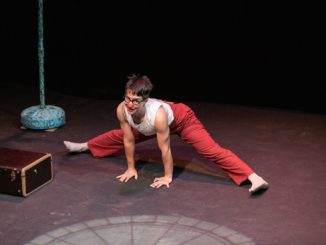
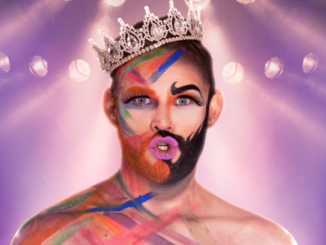
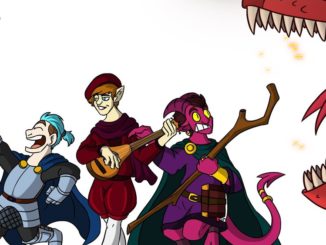
Leave a Reply